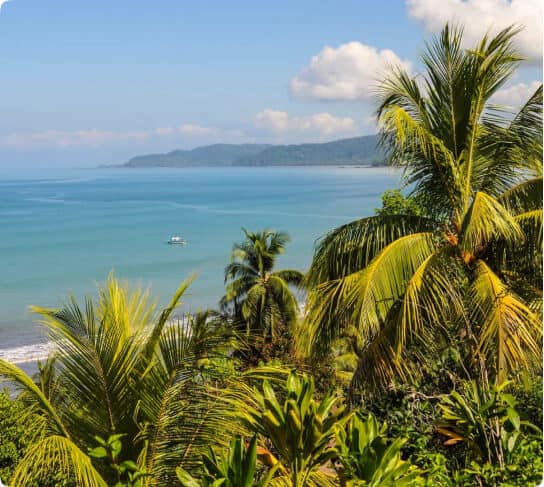Getting Here
Costa Rica Travel Tips
Costa Rica is one of the most popular countries to visit in Central America. Its beautiful beaches, lush rainforests, and national parks attract tourists from across the globe—and chances are if you’re reading this, they’ve caught your attention too!
Don't forget to book your vacation rentals with us
If you’re like most travelers, you want to know as much as you can about visiting Costa Rica before your trip to plan a fun, stress-free vacation.
Fortunately, we’re sharing all our best Costa Rica travel tips, including transportation methods, safety advice, and money-saving strategies, so you can make the most of your time in this beautiful country.
trip duration
How Long Should I Stay in Costa Rica?
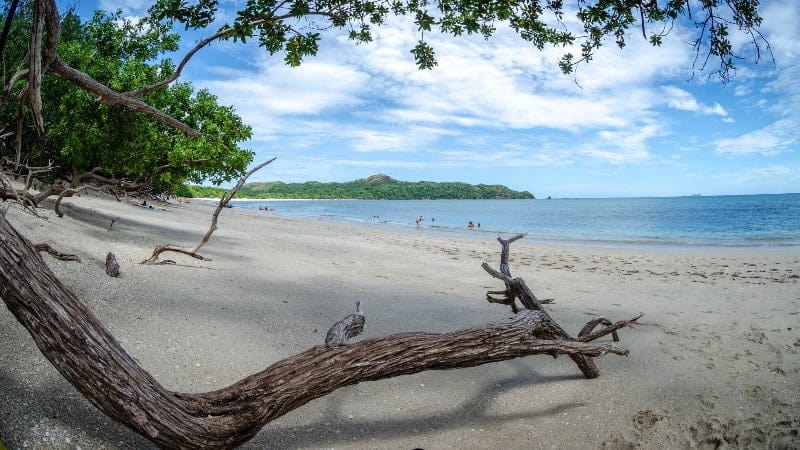
Before we jump into our list of helpful travel trips, we wanted to share the most important Costa Rica travel tip of all—plan to spend way longer in this beautiful country than just one week!
We recommend staying in the Guanacaste Province so you can have quick access to the country’s hundreds of beaches on the Pacific Coast. You can also plan excursions to Arenal Volcano, La Fortuna, Manuel Antonio National Park, Monteverde Cloud Forest, and other popular locations.
Since the country’s attractions are spread out, it’s important to plan enough days to see the notable sites while enjoying a relaxing, slow-paced vacation.
where to land
Airport Options

If you’re traveling from outside of the country, you can fly into the Juan Santamaría International Airport in San Jose (SJO), or into Daniel Oduber International Airport (LIR) located in Liberia, Guanacaste.
If you’re planning to rent a car, you can find options at both airports. If you land in the Juan Santamaría International Airport, we recommend staying away from downtown San Jose, especially during rush hour, to avoid the chaotic traffic.
If instead of renting a car you want to take a bus, shuttle, or taxi, you can read more about the available transportation options in Costa Rica below.
Book Your
Costa Rica Vacation
transportation options
Transportation
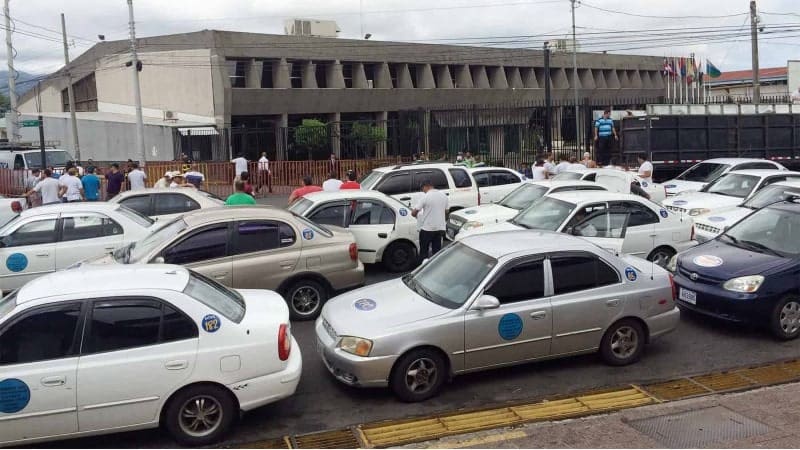
Car Rentals
Costa Rica is a small country, but that doesn’t mean there isn’t plenty to see! Getting a rental car is one of the best ways to visit Costa Rica’s land and diverse terrain, from the rainforest canopy to incredible beaches, on your own time.
Before booking a rental car in Costa Rica, here are some crucial tips you should know:
- Consider booking a car with four-wheel drive, especially if you plan on off-roading or riding through mud, sand, or other rural areas. To get to some of the most exotic and pristine beaches, national parks, forests and more, you will encounter some rough terrain on your way, so be prepared!
- Many Costa Rican car rental companies will charge you considerable rental fees, taxes, and a security deposit. These fees are usually not disclosed when you reserve your car, so budget ahead for this often “unexpected” cost.
- Book your car online before arriving in Costa Rica to secure the best deal. We recommend renting from Adobe Rent a Car for competitive rental rates and top-notch service.
- Fill your gas tank while traveling through big cities to get the best deals on gas and to avoid running out of gas in a remote area.
Bus
If you don’t feel comfortable driving in Costa Rica, the country has a reliable bus system that offers convenient access to and from many popular cities and attractions. Although taking the bus may increase your overall travel time, it can minimize the stress and liability of driving in Costa Rica.
Here are a few of the most popular bus routes in Costa Rica:
San Jose to La Fortuna
- San Jose to Manuel Antonio National Park
- San Jose to Tamarindo
- Manuel Antonio to Tamarindo
You can use the Bus Schedule, an online resource listing the bus schedules for Central America, South America, the Caribbean, India, and the Balearic Islands, to find Costa Rica bus routes, including dates, times, departure, and arrival points.
Shuttle
Shuttles are another excellent way to travel around Costa Rica without renting a car. Since tourism is a popular industry in Costa Rica, the shuttle system is very well-developed.
Shuttles typically carry between 5 and 14 passengers. You can choose to reserve a private shuttle, reserved just for you and your group, or a public shuttle that takes other passengers. Typically, private shuttles offer more flexibility to work around your itinerary, whereas shared shuttles operate on a set schedule.
Learn more about our private shuttle service to discover if you’d be interested in this convenient option during your trip to Costa Rica.
Cab
If you don’t need to travel far, taking a cab or a taxi can be convenient while traveling in Costa Rica. Before getting into a taxi, ensure it’s an official taxi—red with a yellow light on top. If you’re at the airport, you may see orange taxis, which are airport taxis (Ps: orange taxis tend to be more expensive than regular red taxis).
It’s vital to take official Costa Rican taxis to ensure they charge fair rates and have proper insurance.
Both the San Jose Airport and Liberia Airport have an official taxi stand outside the exit. If you’re taking a taxi to your hotel or vacation rental from the airport, we recommend using this official taxi service.
Uber
Uber has been operating in Costa Rica since 2015 and it has been a very popular and preferred means of transportation option for tourists and locals alike. Uber tends to be 10-15% cheaper than taxis in Costa Rica, and it can be an easy way to get from one location to another, especially if the buses aren’t running when or where you’re trying to travel.
It’s important to note that many popular locations in Costa Rica are located several hours apart, so Uber is not always a practical or economical way to travel throughout the country, nonetheless, it is for sure better to take an Uber than a taxi if your destination is not very far.
getting around
Maps

Driving in Costa Rica is not for the faint of heart. Some Costa Rican roads are tough to navigate, often unpaved, and include potholes so large you need to swerve into the opposite lane to avoid them.
Additionally, outside of San Jose, there aren’t any street names or house numbers, making navigation a challenging endeavor.
We recommend using Waze to navigate Costa Rica. Thousands of locals update this community-based maps app to provide you with the most up-to-date traffic information, including real-time traffic, speed traps, and construction zones.
You can also download Google Maps for offline navigation—both while in your rental car and walking around town. Google Maps can be particularly helpful if you’re in a remote location without an internet connection.
speaking with locals
Language

The official language in Costa Rica is Spanish, so it’s helpful to know a few key Spanish phrases and greetings before your trip to Costa Rica.
In the more touristy areas of the country, many Costa Ricans speak English, but if you’re planning to travel off the beaten path, it’s wise to learn some common phrases in the local language. You can even learn some amusing Costa Rican phrases to strike up a conversation with a local while you’re visiting Costa Rica.
Here are some Spanish words you should learn before your trip to Costa Rica:
- Hola: Hello
- Adiós: Goodbye
- Por favor: Please
- Gracias: Thank you
- Lo siento: Sorry
- Sí: Yes
- No: No
- Pura vida: Pure life
Weather Information
Weather
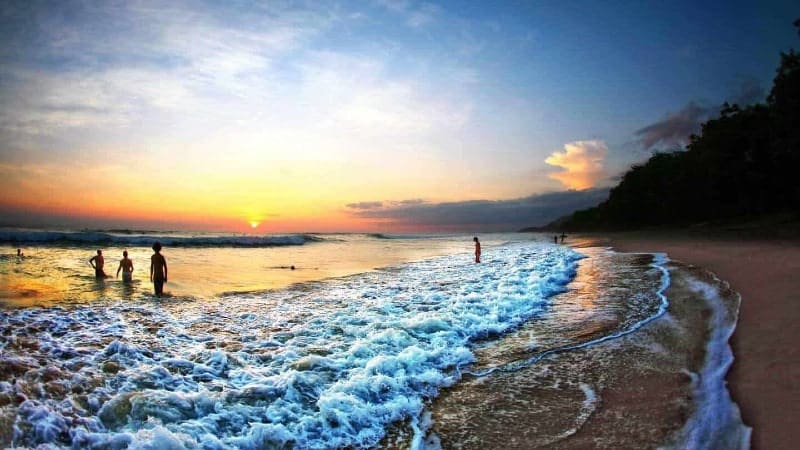
Costa Rica is an excellent location to visit at all times of the year! However, it’s essential to understand that Costa Rica’s weather is divided into the dry season and the rainy season (or green season). The weather can vary depending on what time of year and which region you’re visiting.
Dry Season
Costa Rica’s dry season runs from December to April. It’s the most popular time of the year to visit Costa Rica since the weather is warm, sunny, and dry.
The Guanacaste Province is Costa Rica’s driest region. If you’re staying here during the dry season, you can expect hot temperatures and clear, blue skies—perfect for visiting the region’s beautiful beaches!
However, if you travel into the Central Valley, to areas like La Fortuna and Monteverde, or southern parts of the country, like Manuel Antonio National Park and the Osa Peninsula, you can expect lush greenery, cooler temperatures, and the occasional rain shower.
Rainy Season
Costa Rica’s rainy season runs from May to November. During these months, Costa Rica experiences considerable rainfall, and the country operates at a slower pace. Some tours and businesses shut down, so you can expect a quieter vacation if you visit Costa Rica during the green season.
Aside from the peaceful atmosphere, there are tons of awesome benefits of traveling to Costa Rica during the green season, including better prices on flight tickets, accommodations, tours, experiences, and more.
Peak Season
Costa Rica’s peak season is December and January. During these months, the landscape is still lush from the rainy conditions, and the high temperatures range from 75°F to 85°F, which offers the perfect escape from the cold winter weather in many countries further north of the equator, like the United States.
However, international tourism isn’t the only contribution to the peak season. Domestic tourists also take advantage of the beautiful weather to explore their own country. Most hotels add a “high season premium” to their rooms, and flights to Costa Rica are always more expensive during this time of year.
If you’re determined to visit Costa Rica during the peak season, here are some tips for securing the lowest price for your vacation:
- Book your flights, accommodations, and tours as early as possible.
- Spend the early mornings or late afternoons sightseeing, when crowds are the lowest.
- Visit beaches, sites, and attractions that aren’t as well known to enjoy a more peaceful experience.
You can usually dodge the crowds and high prices if you visit the country during Costa Rica’s low season. We recommend visiting in November, right as the rainy season is ending, but before the crowds begin to arrive in December.
safety tips
Safety

Costa Rica is a safe country, as long as you use common sense and follow basic safety precautions.
Very few places in Costa Rica could be described as “dangerous”, and they are usually not close to touristic places anyway. However, we recommend leaving the city after you arrive to explore safer (and more beautiful) locations, like the Pacific Coast.
The most significant safety risk outside the capital city is petty theft (like pickpocketing), so keep your valuable possessions in a safe place, and don’t show off your expensive accessories, like jewelry and watches.
It’s also wise to keep your passport tucked away safely at your vacation rental and to carry a copy or photo with you instead.
Don’t venture off the beaten path if you’re traveling at night. Solo travelers should also watch their drinks if they’re enjoying the nightlife in Costa Rica, like in any other place in the world really.
health tips
Health

Travel Insurance
Although you’re no longer required to purchase travel insurance before your trip to Costa Rica, we highly recommend still purchasing insurance from a Costa Rican company, like Blue Cross Blue Shield Costa Rica, or an international company, like Trawick International.
Insurance can cover unexpected events during your trip, like getting hurt, missing your flight, losing baggage, getting in a car accident, or even natural disasters (highly unlikely in Costa Rica).. It’s wise to have travel insurance to provide you with peace of mind during your Costa Rican vacation, so you can embrace the “pura vida” lifestyle.
You can learn more about vaccine requirements, insurance plans, health restrictions, and more on this page detailing Costa Rica’s travel requirements.
Safe Tap Water
You’ll be relieved to know that the tap water in most places in Costa Rica is safe to drink, so you don’t have to purchase single-use bottled water during your Costa Rican vacation. We recommend bringing a refillable water bottle, like a Hydro Flask or Yeti, so you can refill your bottle at your vacation rental or hotel and carry it with you throughout the day.
Pack what you need
Packing Tips

In addition to the usual items you’d pack, like shirts and toiletries, don’t forget to bring these unique items to Costa Rica:
- Hiking shoes—If you’re planning to explore Costa Rica’s excellent hiking trails, don’t forget to pack comfortable tennis shoes or hiking boots.
- Water shoes—In addition to hiking shoes, be sure to pack some non-slip water shoes. Many of Costa Rica’s hikes lead to waterfalls, and having water shoes can make exploring these areas more accessible.
- Bathing suit—If you’re planning to relax on the beaches along the North Pacific, South Pacific, or Caribbean Coast, bring a swimsuit so you can take surf lessons or soak up the sun!
- Rain jacket—Even if you’re visiting during the peak season, bring a rain jacket to Costa Rica for day trips to the Monteverde Cloud Forests, Arenal Volcano, and other excursions in the Central Valley.
First aid kit—Since you’ll be doing so much exploring, bring some first aid supplies, like band-aids and antibacterial ointment, for minor injuries during your trip.
Phone
Before leaving for Costa Rica, you can unlock your phone and buy a local SIM card. You can purchase SIM cards from KOLBI and can find them at both of Costa Rica’s major airports. These cards usually cost less than a dollar, and they offer tons of pre-paid plans depending on your unique needs.
If you’d like to avoid the hassle of buying a SIM card, it may be worthwhile to invest in an international plan. For example, Verizon Wireless charges $70 monthly for 100 minutes of talk, 100 sent texts, and 0.5 GB of data, and increases to 250 minutes of talk, 1,000 sent texts, and two GB of data for $130 per month. Other wireless carrier companies offer similar plans. If you purchase an international plan, you’ll be able to avoid the hassle of getting a SIM card when you arrive for a stress-free vacation.
Many hotels and restaurants offer free Wi-Fi, which will allow you to use apps like WhatsApp, Facebook, Facetime, or Skype to stay in touch with family and friends at home for free. You can also purchase a Wi-Fi hotspot to access affordable, high-speed data across multiple devices during your trip.
money tips
Money

Costa Rica is one of the most expensive countries to visit in Latin America. It’s important to note that traveling throughout Costa Rica isn’t as cheap as in other countries in Central America, especially if you want to visit many of the country’s national parks, waterfalls, rainforests, and more.
However, you can still travel on a budget to Costa Rica if you understand the following information about Costa Rica’s currency and some general tips for saving money during your trip.
Exchange Rates
Costa Rican colones (CRC) are the country’s main currency. For reference, 10 USD is equal to roughly 6,635 CRC (as of April 2022). Although colones are the main currency in Costa Rica, many places, especially tourist locations, accept USD as well as credit cards.
If you want to convert your dollars into colones during your trip to Costa Rica, it’s wise to avoid the airport and exchange your money at an ATM or bank, like Scotia Bank or BNCR, to avoid high exchange rates. And don’t forget to bring your passport—you’ll need it to exchange your currency in Costa Rica.
Tips to Save Money in Costa Rica
- Carry a combination of large notes, small notes, change, and a credit card to be prepared for all financial situations, like small parking fees or cashless transactions.
- Most national parks in Costa Rica charge an entry fee ranging from $7 to $15. Choose the national parks you visit wisely since the entry fees can quickly add up.
To save money on food, eat at local sodas, where you can try local food at an affordable price, like Gallo Pinto and Casado. You can also stay in a vacation rental with a full kitchen, where you can purchase food at the grocery store and cook “at home.”
tour tips
Tours
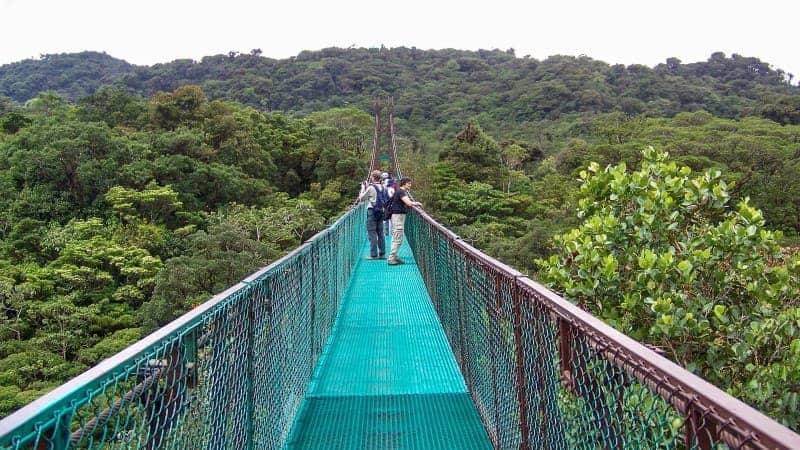
Whether you’re going horseback riding on the beach, visiting a wildlife refuge, or embarking on a coffee plantation tour, it’s crucial to select knowledgeable, reliable tour guides to have the best experience exploring this amazing country.
Since the best tour guides will be busy, it’s vital to call months before your vacation to reserve your tours, especially at popular attractions, like Arenal Volcano.
Make Visiting Costa Rica Effortless with These Costa Rica Travel Tips
We hope these Costa Rica travel tips will help you have a safe, fun, and stress-free vacation!
If you want to enjoy staying in one of the most beautiful locations in Costa Rica’s Guanacaste Province, look no further than our wide selection of vacation rentals, villas, beachfront rentals, and more!
FAQs
Questions about
Costa Rica travel tips
Every Costa Rica travel guide will tell you to avoid the following during your vacation to Costa Rica.
- Never leave your valuables unattended.
- Never visit the beach or walk alone at night.
- Don’t get into an unofficial taxi.
- Don’t forget to wear sunscreen and bug spray.
- Leave your passport in a safe place unless you need to carry it for a specific purpose.
- Stay away from dangerous or high-risk areas.
Don’t overlook these travel tips to prepare for a trip to Costa Rica:
- Stay safe by avoiding the country’s high-risk areas and keeping your valuables tucked away.
- Book plenty of excursions to see the country’s beaches, rainforest, parks, and more.
- Remember to respect the area you are traveling to—including the Costa Ricans and their culture and the beautiful natural surroundings you’re exploring.
- Book an accommodation that immerses you in nature and adds to your travel experience.
- Purchase insurance so you can stay safe and prepare for the unexpected.
Costa Rica is safe to visit if you follow basic safety practices, like storing your valuables in your hotel or vacation rental, and not flaunting jewelry or other expensive possessions.
As of April 1st, Costa Rica lifted all of the travel restrictions pertaining to COVID-19. You can read more about Costa Rica’s health and travel requirements here.
